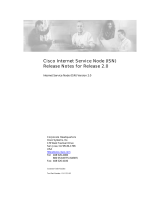
18 Quick Install Steps for Initiator-Target Connection
3
If you are using the PowerVault NX1950 cluster solution with a storage
array, perform the following tasks:
a
Turn on all nodes of the cluster.
b
Create one or more volumes on the storage array and assign them to
the Cluster Group.
c
Use the volumes that you created to create Virtual Disks for iSCSI
Ta rg e ts .
d
Pre-requisites to configure the PowerVault NX1950 cluster solution as
an iSCSI Target can be seen in the section “Creating a Highly
Available iSCSI Target” in
Dell PowerVault NX1950 Cluster Systems
Installation and Troubleshooting Guide
on the Dell Support website at
support.dell.com
.
NOTE: Before you configure the PowerVault NX1950 cluster solution as an
iSCSI Target, turn off the firewall in all cluster nodes to ensure proper iSCSI
Target configuration.
Configuring the Initiator (Host)
Configure the Microsoft iSCSI Initiator with the IP address of the Target
server's information. Perform the following steps to configure the Initiator:
1
Go to the server that has Microsoft iSCSI Initiator installed. Select
Start
→
Programs
→
Microsoft iSCSI Initiator
→
iSCSI Initiator Properties
→
Discovery
tab
→
Select
Add
.
2
Add the IP address of one of the NICs on the PowerVault NX1950 storage
system that is configured for iSCSI traffic.
3
Click
OK
.
NOTE: If you are using the 3.0 iSCSI Target software to configure the
PowerVault NX1950 cluster solution as the Target, you must use the IP
address configured in the cluster for iSCSI traffic and not the IP address of a
specific node or cluster IP address (in public/corporate network). This
ensures proper connection between the Initiator and Targets during cluster
node failover or Cluster Group move among different nodes of cluster.
NOTE: If you are using the 3.1 iSCSI Target software to configure the PowerVault
NX1950 cluster solution as the Target, you must create at least one iSCSI HA
instance on each node and use the IP address for iSCSI traffic. This ensures
Active/Active Target-Initiator connection (connection with targets created on all
nodes of cluster) and high-availability in the event of node failure.






















